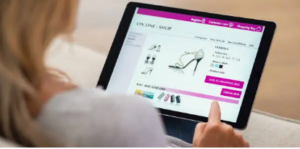Foil surfing is a new type of surfboarding that involves adding a hydrofoil to your surfboard. It is much harder to learn than traditional surfing but offers an exhilarating ride once mastered.
Foil surfing has become popular after Kai Lenny blew up the internet with footage of him gliding and hopping on small, non-breaking waves. Foiling opens up a new range of locks for surfers and is incredibly fun to watch from the beach. For more information about surf foiling, click here.
How it works
 It combines hydrodynamics and Newton’s third law (for every action, there is an equal and opposite reaction). The curved top surface of the front wing accelerates water molecules under it and generates upward lift. The rear wing counteracts this lift with its opposite profile and angle.
It combines hydrodynamics and Newton’s third law (for every action, there is an equal and opposite reaction). The curved top surface of the front wing accelerates water molecules under it and generates upward lift. The rear wing counteracts this lift with its opposite profile and angle.
Foil surfers can ride waves that would otherwise be impossible because the foil absorbs much of the wave’s power, allowing riders to sit comfortably on the board. Foils can also catch crumbly small waves and even ride straight from the beach without requiring any ‘monkey pumping’ to generate speed.
Having the right equipment to start surfing is essential, especially if you want to avoid hurting yourself or others. You’ll need a surfboard that can handle the extra stress of a hydrofoil, a foil system, and a suit (we recommend a helmet for beginner surfers). If you fall off your foil, you’ll also need a leash, life jacket and possibly a second pair of shoes to wear on the beach.
Techniques
When learning foil surfing, levelling up your regular surfing skills first is essential. Foils require a completely different approach to the water and can be extremely dangerous with the sharp blade of the hydrofoil in action. Foils, especially the heavier metal ones, are capable of inflicting serious injury if they hit a surfer or swimmer in crowded surf. For more information about surf foiling, click here.
Small crumbly waves offer the best learning opportunity when ready to start foiling. The key is to keep the foil low in the water to create lift. Then, once you have the hang of this technique, you can begin to hop/glide and cut back.
Foils made for surf can pump much better than other foils because they don’t lose energy to friction in the water as regular boards do. This makes connecting a multitude of waves more possible. Pumping is the repetitive motion of shifting weight from foot to foot on your foil board to generate thrust.
Equipment
The most essential equipment for foiling is a surfboard that can take off on small waves. You also need a hydrofoil, which can be retrofitted to your regular board or ordered from a specialist. Foiling requires a lot of balance and fitness. You’ll need to paddle efficiently and not shake the foil.
Foils are sharp, and a collision with them can cause injury to the rider and nearby ocean users. It’s crucial to know your location and the depth of the water. Foilers can reach high speeds and may be challenging to see, which could pose a risk for other ocean users.
The best conditions for foiling are a consistent wind of about 18-25 mph, flat water, and no chop or waves. It’s essential to avoid extensive reefs and crowded breaks. Instead, search for spots that provide a soft and crumbly wave to practice on. This will help you level up your surf skills while minimising risks. For more information about surf foiling, click here.
Safety
While foil surfing has opened new ways of riding waves and enjoying the ocean, it carries certain risks. The hydrofoil fin (not a blade, mind you) should not be messed with, especially by an inexperienced surfer.
Foils have long, sharp wings that can cut marine life in half and are equally dangerous to humans. If a surfer loses control and comes down on the foil, it’s a lethal weapon able to inflict severe injuries.
That’s why it’s essential to wear a full wetsuit, impact vest or helmet and to practice foiling only in a safe environment. Foiling behind a boat or jet ski can be a great way to get used to the foil, board, and mast movements. Starting with a short mast and small crumbly waves is also good. That way, you avoid getting dragged by your equipment, and the initial, often brutal wipeouts are minimised.
 Zappos shoes are an outstanding example of how online shoppers can find shoes that suit them perfectly. Their wide variety of styles and sizes and no-hassle 365-day return policy make searching easy!
Zappos shoes are an outstanding example of how online shoppers can find shoes that suit them perfectly. Their wide variety of styles and sizes and no-hassle 365-day return policy make searching easy! Non bank lenders NZ
Non bank lenders NZ